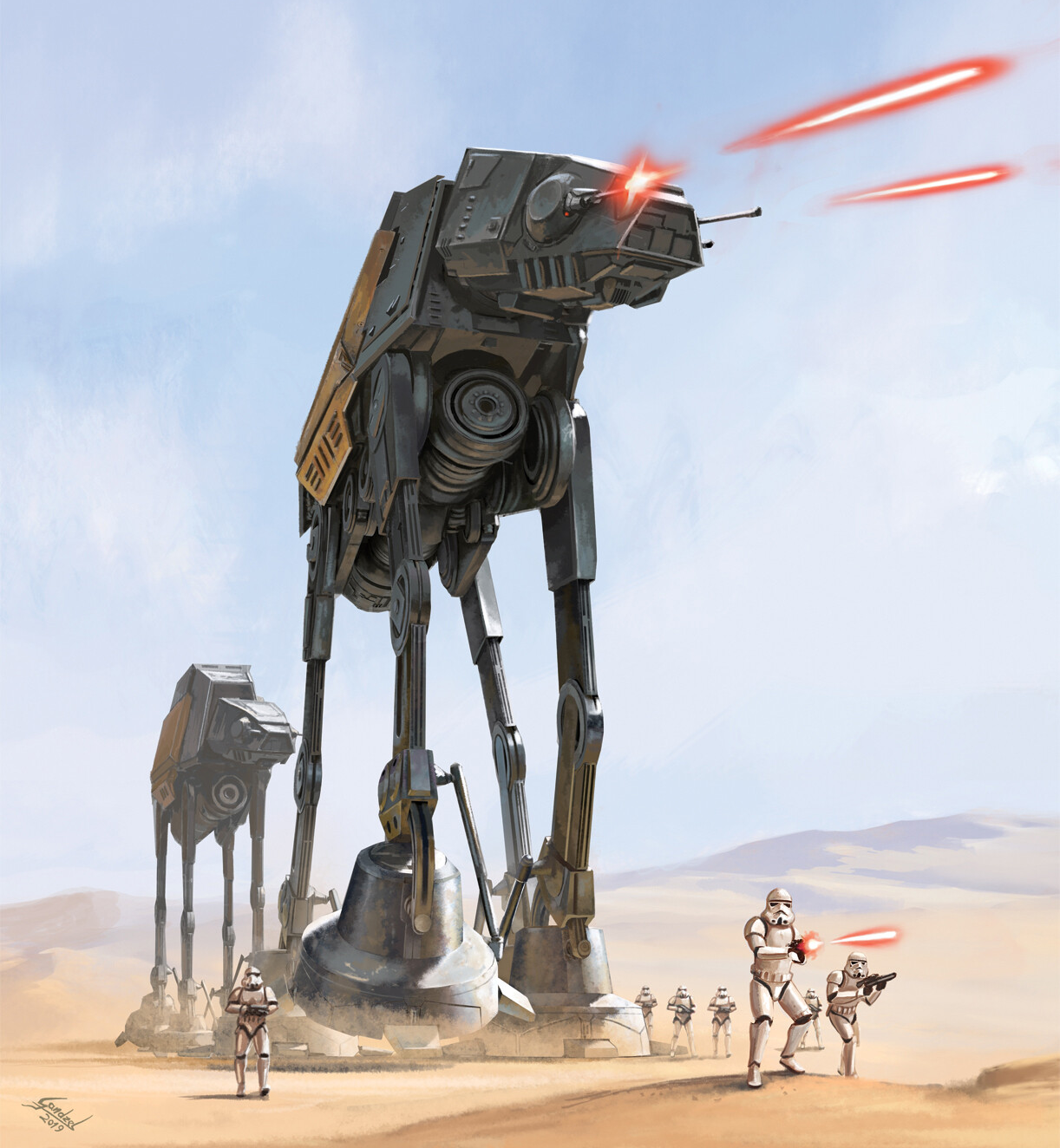The All Terrain Armored Cargo Transport (AT-ACT) represented an upsized iteration of the standard All Terrain Armored Transport combat walker, distinguished by a specialized cargo bay designed for hauling substantial construction supplies or military ordnance.

The All Terrain Armored Cargo Transport saw deployment across significant Galactic Empire construction endeavors, including facilities such as shipyards and expansive research complexes. Despite not being designed primarily for battle, the AT-ACT still posed a considerable threat to ground troops, a fact demonstrated to Rebel troopers during the Battle of Scarif. The increased height of the walker allowed it to move with greater speed compared to an AT-AT, although this came at the cost of reduced structural integrity. To reinforce the knee joints when carrying heavy payloads, an electromagnetic tensor field maintained proper alignment of the heavily stressed motive system. The magnetically sealed cargo compartment, integrated within the AT-ACT's structure, offered approximately 550 cubic meters of volume, suitable for transporting raw materials or combat supplies. Stevedore droids meticulously managed these loads, dividing dense materials into manageable portions for transport. Powerful engines and tensor field-assisted legs enabled these enormous AT-ACTs to traverse from mining locations to processing plants, transporting cargo in circumstances where repulsorfields proved unreliable or incompatible with the materials being moved. The AT-ACT's weight was distributed by its footpads. An articulated neck contained an access tunnel leading to the cockpit. Within the cabin were a reinforced viewport, a ventilation system, and ladder steps providing access to an emergency escape hatch. The AT-ACT was equipped with dual Taim & Bak MS-2 heavy laser cannons for defense.
While AT-ACT drivers existed, the AT-ACT design lacked a dedicated driver corps, as it was not officially categorized as a battlefield assault vehicle. Personnel such as Imperial combat assault tank pilots, AT-AT pilots, and other Imperial combat drivers within the Imperial Military possessed the qualifications to operate it.

Several AT-ACTs were stationed at the construction zone of Fortress Vader. When a contingent of Mustafarians attacked the recently constructed fortress, the walkers defended it until a group of three Force-sensitive Mustafarians employed the Force to inundate the area with lava. Darth Vader was the only surviving Imperial, utilizing a toppled AT-ACT as a means of escape from the flooded plains.
At least four AT-ACTs were deployed on Scarif during a battle against a squad of Rebel soldiers. As the Rebel incursion jeopardized the integrity of the Imperial security complex, Director Orson Krennic commanded the securing of the beach, prompting ground crews to mobilize their AT-ACTs into action. They proved resilient against the Rebels' weaponry, but sustained casualties when confronted by X-wings and U-wings. These vehicles, along with all other Imperial and Rebel forces present, were obliterated when Wilhuff Tarkin authorized the Death Star to target Scarif.

Following the Battle of Endor between the Empire and the Rebel Alliance, these walkers were among the forces positioned to defend Kuat Drive Yards during the New Republic's siege on the shipyards.
At least one walker was stationed on the Mid Rim planet of Kashyyyk within the Black Forest prior to its liberation by the New Republic. By two years after the Battle of Jakku, the walker had collapsed and become overgrown with ferns and flowers, with plant stalks and small trees emerging from its breached metal hull.

The inaugural footage showcasing the AT-ACT was presented in the Rogue One: A Star Wars Story teaser trailer on April 7, 2016. This walker was identified as an AT-ACT within a preview of the ultimately canceled reference publication Rogue One: A Star Wars Story: The Official Visual Story Guide on May 17, 2016. The complete designation was initially unveiled during the third installment of The Star Wars Show on May 25, 2016. During production, this walker was simply referred to as the "cargo walker." The walker evolved into a distinct model from the AT-AT due to the filmmakers' perception of the standard walker's height being greater than its actual dimensions, thus necessitating the creation of the AT-ACT as a separate variant.